But indeed, one would be mistaken if they were to assume that ancient cultures only knew how to party by using alcohol alone. History is full of recreational drug use, even regarding substances that modern historians aren’t exactly sure what they exactly were. From depressants to hallucinogens to substances that were pretty much 99% poison, people took them anyway to get a little buzz. Here is a list of ten different drugs that were commonly used in ancient and classical history.
10 Saffron
One of the most expensive substances in the world just so happened to see extensive medicinal usage in ancient history. Known by the Latin name Crocus sativus, the inner stigma from the crocus flower has been harvested since as early as 3,000 BC. The prized spice has also seen prolific use across the world. Though the Mesopotamian and Akkadian civilizations got the jump on using the flower, its use as a medicine, spice, and dye has been recorded from ancient Egypt to ancient Japan and everywhere in between. As for saffron’s medicinal uses, ancient texts describe the spice as being useful as a strong painkiller, as well as a component in lifting the moods of people with depression. Both of these effects have been recorded to administer opioid-like effects when more than five grams of the flower stigmas are ingested. Those who could afford the pricey spice and found themselves regularly able to use it have even developed chemical dependencies on saffron.[1]
9 Kykeon
The Greek beverage known as “kykeon” has often been written about and described as a powerful hallucinogen. However, aside from knowing that wine, barley, and perhaps honey are on the ingredient list, the full recipe has sadly been lost to history. Despite this, mentions of the debilitating drink have been recorded in both of Homer’s famous poems The Iliad and The Odyssey, as well as in the clandestine rites performed by an Attican cult of Demeter, initiations known as the Eleusinian Mysteries. Watch this video on YouTube However, some historians speculate that the parasitic fungus known as ergot may play a role in creating kykeon. Ergot is a black fungus that grows on grain, primarily rye and barley, that is often too small to see with the naked eye. While ergot is known to cause hallucinations and an altered state of consciousness, it is also terribly taxing on people’s muscles, leading to more damage than enjoyment. Safe refinement of ergot is a tricky and esoteric process, even in modern times. It’s also one of the theories surrounding the hysteria that was the Salem Witch Trials in 1692 in Massachusetts.[2]
8 Fly Amanita
One of the most iconic-looking mushrooms, the red-and-white fly amanita, is also commonly understood to be a potent hallucinogen in addition to being a fairly poisonous hallucinogen. Despite the threat of intense nausea and strain to the digestive system, recreational usage of the hallucinogenic toadstool has been well documented by people both in historical Siberia and Scandinavia. Some speculate that it is the mushroom behind the famous intoxicating drink from the Vedic Texts of India: soma. Watch this video on YouTube Also known as Amanita muscaria and fly agaric,” the ruby-colored fungus has seen use in the last 4,000 years of human history. The chemicals that produce the hallucinogenic effect are muscimol and ibotenic acid. Weirdly enough, these same chemicals can be passed through one’s urine, making it possible to experience the effects without (objectively) experiencing intense nausea—should one be bold enough to drink someone else’s pee.[3]
7 Blue Lotus
In Homer’s second epic poem The Odyssey, an account is listed where Homer’s hero, Odysseus, finds his wayward craft at the mysterious Island of the Lotus Eaters, also known as Djerba, near Tunisia. On said island, the denizens convince Odysseus’s crew to consume the blue flower, leading to widespread lethargy and a lack of desire to continue their journey. Though a large number of events in the poem are purely fictitious, some speculate that historical accounts of people consuming blue flowers to get high may be rooted in some truth. The eponymous blue lotus, also known by its Latin name, Nypmhaea caerulea, grows in the northern African countries that border the Mediterranean. The flower is known to contain the chemicals apomorphine and nuciferine, which can either cause a heightened sense of euphoria, in addition to hallucinations. Though The Odyssey is thought to contain references to the flower, the first mention of the blue lotus in a historical text may be in the Egyptian “Book of the Dead,” a significant religious text.[4]
6 Mad Honey
The next substance comes from the Anatolian Peninsula, where modern-day Turkey can be found, though it has also seen recorded use from ancient Greece to ancient Nepal. When bees pollinate the Anatolian Rhododendron luteum or Rhododendron ponticum, the honey takes on a redder hue and loses its sweetness. The honey also contains grayanotoxin derived from the flower, which is known to produce a noticeable hallucinatory effect when consumed. Watch this video on YouTube Known as “Mad Honey,” this substance is certainly a double-edged sword, for even though it’s often used recreationally, eating too much of it can cause severe issues with the digestive system, heart issues, and even paralysis. It was recorded in 69 BC that the armies of Pompey the Great became enchanted with the local honey when in the area. They subsequently did very poorly against Anatolia, both due to the hallucinations and the severe, less-than-tasteful digestive issues.[5]
5 Ayahuasca
Regarding the specific recipe, ayahuasca is a tea derived from the Banisteriopsis caapi vine, in addition to Psychotria viridis leaves found in the area. However, it is a very rare instance where ayahuasca is consumed outside of its important ritualistic context. Not surprisingly, the substance has brought a huge flock of curious visitors from Western nations eager to legally try a hallucinogen without understanding its religious importance. This has led to a tourism industry that often causes more harm than good. [6]
4 Psilocybin
Where fly amanita often carries a poisonous connotation, the famous “magic mushrooms” are understood to be a more consequence-free hallucinogenic fungus. Like with the agaric, though, the brown-colored psilocybin mushrooms have also seen extensive usage throughout history. It is found naturally in Europe and the Americas, where it is also known by the name “Liberty Cap” and, perhaps more colorfully, “The Flesh of the Gods.” The latter name comes from the magic mushroom’s extensive use by various priests and spiritual leaders for religions in antiquity. Ancient statues and paintings have illustrated people ingesting the mushroom, either for spiritual reasons or just recreationally. In Europe, one of the first depictions of psilocybin consumption can be found on rock art near the town of Villar del Humo, recorded around 4,000 BC. In Mesoamerica, depictions of the liberty cap have been found all the way from modern-day British Columbia to modern-day Mexico.[7]
3 Coca
The plant behind cocaine has seen extensive usage as a recreational drug long before it was refined into a white powder. The leaves of the coca plant naturally contain the alkaloid that gives cocaine its euphoric effect, an effect that could be achieved simply by chewing the leaf or brewing it into a hot tea-like beverage. It is thought that these methods are actually less likely to result in a chemical overdose than the contemporary powder form of cocaine. Watch this video on YouTube The Incan Empire, located throughout the Andean Range in modern-day South America, cultivated the coca leaf as far back as 3,000 years ago, and the consumption of coca even reached north into civilizations in the Yucatan. Though specifically, it was the Aymara people of the Andes from which the etymology of “Khoka” can be derived, whose civilization in modern Bolivia may be more than 5,000 years old.[8]
2 Cannabis
Also known by the more common name “weed,” a specific sativa strain of cannabis was a huge hit in Roman circles during the Classical Period. Weirdly enough, it was used for far more than recreational drug use. Some doctors at the time believed that consuming the drug orally could repel mosquitos, treat venereal diseases, and even stop the flow of blood. Though make no mistake, the Romans had a prolific infatuation for getting high off of pastries with cannabis baked into them, much like modern edibles. Watch this video on YouTube The ancient Greeks were no strangers to the cannabis plant either, and it is speculated that some wines were brewed with the leaf. And for posterity’s sake, the Mediterranean is far from the only place where weed was consumed. The plant was smoked and eaten in ancient civilizations all across Africa, Europe, and Asia. It’s even speculated that the first instance of hemp cultivation took place as far back as 8,000 BC, on the Oki Islands near Japan.[9]
1 Opium
Certain strains of the poppy flower are drenched in alkaloid morphine, and when the seed capsules of the flower are properly refined, the psychoactive opium is crafted. This “Milk of the Poppy” has seen massive widespread use across history, though its first recorded use is younger than marijuana’s. Around 3,400 BC, it was recorded that the Sumerian civilization was the first to cultivate the poppy plant for recreational drug use, though the later Assyrians would perfect the refinement process. Watch this video on YouTube Records of the sale of opium exist wherever trade with the Assyrians and Sumerians occurred, and the substance took off abundantly in ancient Egypt and ancient Greece. Some classical scholars even speculate that Helen of Troy took the drug to assuage the pain caused by the Trojan War. The poppy flower is also heavily associated with the twin Greek gods, Hypnos and Thanatos, representing sleep and death, respectively/ And the Egyptians associate the plant with the God of Knowledge, Thoth, who, Prometheus-like, graciously bestowed knowledge of the plant to an eager mankind.[10]
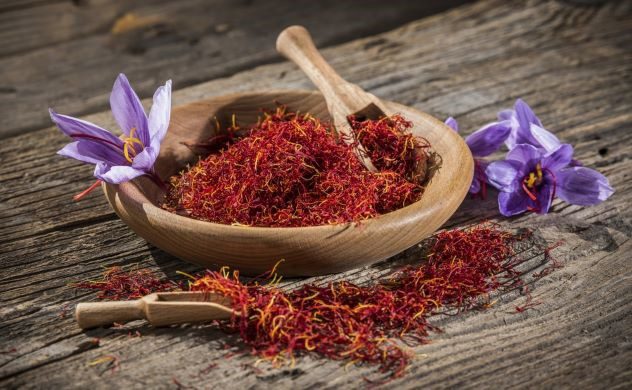
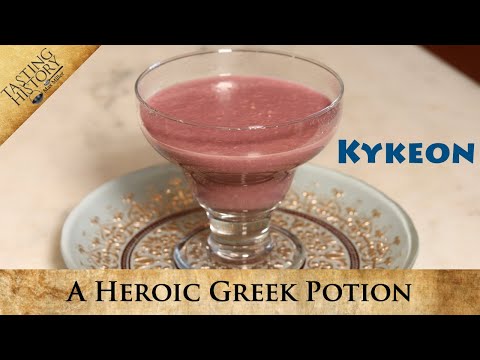





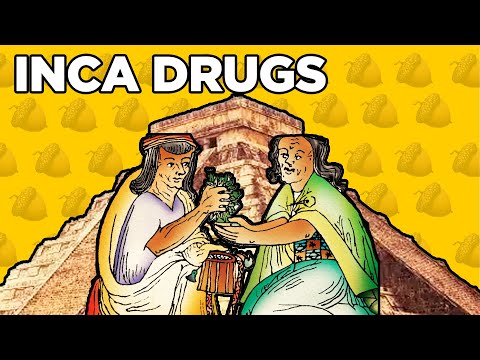

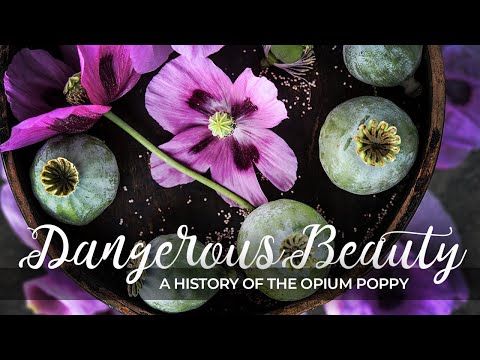






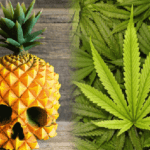








title: “Ten Recreational Drugs That Were Surprisingly Common In Antiquity” ShowToc: true date: “2022-12-19” author: “Clarence Sexton”
But indeed, one would be mistaken if they were to assume that ancient cultures only knew how to party by using alcohol alone. History is full of recreational drug use, even regarding substances that modern historians aren’t exactly sure what they exactly were. From depressants to hallucinogens to substances that were pretty much 99% poison, people took them anyway to get a little buzz. Here is a list of ten different drugs that were commonly used in ancient and classical history.
10 Saffron
One of the most expensive substances in the world just so happened to see extensive medicinal usage in ancient history. Known by the Latin name Crocus sativus, the inner stigma from the crocus flower has been harvested since as early as 3,000 BC. The prized spice has also seen prolific use across the world. Though the Mesopotamian and Akkadian civilizations got the jump on using the flower, its use as a medicine, spice, and dye has been recorded from ancient Egypt to ancient Japan and everywhere in between. As for saffron’s medicinal uses, ancient texts describe the spice as being useful as a strong painkiller, as well as a component in lifting the moods of people with depression. Both of these effects have been recorded to administer opioid-like effects when more than five grams of the flower stigmas are ingested. Those who could afford the pricey spice and found themselves regularly able to use it have even developed chemical dependencies on saffron.[1]
9 Kykeon
The Greek beverage known as “kykeon” has often been written about and described as a powerful hallucinogen. However, aside from knowing that wine, barley, and perhaps honey are on the ingredient list, the full recipe has sadly been lost to history. Despite this, mentions of the debilitating drink have been recorded in both of Homer’s famous poems The Iliad and The Odyssey, as well as in the clandestine rites performed by an Attican cult of Demeter, initiations known as the Eleusinian Mysteries. Watch this video on YouTube However, some historians speculate that the parasitic fungus known as ergot may play a role in creating kykeon. Ergot is a black fungus that grows on grain, primarily rye and barley, that is often too small to see with the naked eye. While ergot is known to cause hallucinations and an altered state of consciousness, it is also terribly taxing on people’s muscles, leading to more damage than enjoyment. Safe refinement of ergot is a tricky and esoteric process, even in modern times. It’s also one of the theories surrounding the hysteria that was the Salem Witch Trials in 1692 in Massachusetts.[2]
8 Fly Amanita
One of the most iconic-looking mushrooms, the red-and-white fly amanita, is also commonly understood to be a potent hallucinogen in addition to being a fairly poisonous hallucinogen. Despite the threat of intense nausea and strain to the digestive system, recreational usage of the hallucinogenic toadstool has been well documented by people both in historical Siberia and Scandinavia. Some speculate that it is the mushroom behind the famous intoxicating drink from the Vedic Texts of India: soma. Watch this video on YouTube Also known as Amanita muscaria and fly agaric,” the ruby-colored fungus has seen use in the last 4,000 years of human history. The chemicals that produce the hallucinogenic effect are muscimol and ibotenic acid. Weirdly enough, these same chemicals can be passed through one’s urine, making it possible to experience the effects without (objectively) experiencing intense nausea—should one be bold enough to drink someone else’s pee.[3]
7 Blue Lotus
In Homer’s second epic poem The Odyssey, an account is listed where Homer’s hero, Odysseus, finds his wayward craft at the mysterious Island of the Lotus Eaters, also known as Djerba, near Tunisia. On said island, the denizens convince Odysseus’s crew to consume the blue flower, leading to widespread lethargy and a lack of desire to continue their journey. Though a large number of events in the poem are purely fictitious, some speculate that historical accounts of people consuming blue flowers to get high may be rooted in some truth. The eponymous blue lotus, also known by its Latin name, Nypmhaea caerulea, grows in the northern African countries that border the Mediterranean. The flower is known to contain the chemicals apomorphine and nuciferine, which can either cause a heightened sense of euphoria, in addition to hallucinations. Though The Odyssey is thought to contain references to the flower, the first mention of the blue lotus in a historical text may be in the Egyptian “Book of the Dead,” a significant religious text.[4]
6 Mad Honey
The next substance comes from the Anatolian Peninsula, where modern-day Turkey can be found, though it has also seen recorded use from ancient Greece to ancient Nepal. When bees pollinate the Anatolian Rhododendron luteum or Rhododendron ponticum, the honey takes on a redder hue and loses its sweetness. The honey also contains grayanotoxin derived from the flower, which is known to produce a noticeable hallucinatory effect when consumed. Watch this video on YouTube Known as “Mad Honey,” this substance is certainly a double-edged sword, for even though it’s often used recreationally, eating too much of it can cause severe issues with the digestive system, heart issues, and even paralysis. It was recorded in 69 BC that the armies of Pompey the Great became enchanted with the local honey when in the area. They subsequently did very poorly against Anatolia, both due to the hallucinations and the severe, less-than-tasteful digestive issues.[5]
5 Ayahuasca
Regarding the specific recipe, ayahuasca is a tea derived from the Banisteriopsis caapi vine, in addition to Psychotria viridis leaves found in the area. However, it is a very rare instance where ayahuasca is consumed outside of its important ritualistic context. Not surprisingly, the substance has brought a huge flock of curious visitors from Western nations eager to legally try a hallucinogen without understanding its religious importance. This has led to a tourism industry that often causes more harm than good. [6]
4 Psilocybin
Where fly amanita often carries a poisonous connotation, the famous “magic mushrooms” are understood to be a more consequence-free hallucinogenic fungus. Like with the agaric, though, the brown-colored psilocybin mushrooms have also seen extensive usage throughout history. It is found naturally in Europe and the Americas, where it is also known by the name “Liberty Cap” and, perhaps more colorfully, “The Flesh of the Gods.” The latter name comes from the magic mushroom’s extensive use by various priests and spiritual leaders for religions in antiquity. Ancient statues and paintings have illustrated people ingesting the mushroom, either for spiritual reasons or just recreationally. In Europe, one of the first depictions of psilocybin consumption can be found on rock art near the town of Villar del Humo, recorded around 4,000 BC. In Mesoamerica, depictions of the liberty cap have been found all the way from modern-day British Columbia to modern-day Mexico.[7]
3 Coca
The plant behind cocaine has seen extensive usage as a recreational drug long before it was refined into a white powder. The leaves of the coca plant naturally contain the alkaloid that gives cocaine its euphoric effect, an effect that could be achieved simply by chewing the leaf or brewing it into a hot tea-like beverage. It is thought that these methods are actually less likely to result in a chemical overdose than the contemporary powder form of cocaine. Watch this video on YouTube The Incan Empire, located throughout the Andean Range in modern-day South America, cultivated the coca leaf as far back as 3,000 years ago, and the consumption of coca even reached north into civilizations in the Yucatan. Though specifically, it was the Aymara people of the Andes from which the etymology of “Khoka” can be derived, whose civilization in modern Bolivia may be more than 5,000 years old.[8]
2 Cannabis
Also known by the more common name “weed,” a specific sativa strain of cannabis was a huge hit in Roman circles during the Classical Period. Weirdly enough, it was used for far more than recreational drug use. Some doctors at the time believed that consuming the drug orally could repel mosquitos, treat venereal diseases, and even stop the flow of blood. Though make no mistake, the Romans had a prolific infatuation for getting high off of pastries with cannabis baked into them, much like modern edibles. Watch this video on YouTube The ancient Greeks were no strangers to the cannabis plant either, and it is speculated that some wines were brewed with the leaf. And for posterity’s sake, the Mediterranean is far from the only place where weed was consumed. The plant was smoked and eaten in ancient civilizations all across Africa, Europe, and Asia. It’s even speculated that the first instance of hemp cultivation took place as far back as 8,000 BC, on the Oki Islands near Japan.[9]
1 Opium
Certain strains of the poppy flower are drenched in alkaloid morphine, and when the seed capsules of the flower are properly refined, the psychoactive opium is crafted. This “Milk of the Poppy” has seen massive widespread use across history, though its first recorded use is younger than marijuana’s. Around 3,400 BC, it was recorded that the Sumerian civilization was the first to cultivate the poppy plant for recreational drug use, though the later Assyrians would perfect the refinement process. Watch this video on YouTube Records of the sale of opium exist wherever trade with the Assyrians and Sumerians occurred, and the substance took off abundantly in ancient Egypt and ancient Greece. Some classical scholars even speculate that Helen of Troy took the drug to assuage the pain caused by the Trojan War. The poppy flower is also heavily associated with the twin Greek gods, Hypnos and Thanatos, representing sleep and death, respectively/ And the Egyptians associate the plant with the God of Knowledge, Thoth, who, Prometheus-like, graciously bestowed knowledge of the plant to an eager mankind.[10]
























